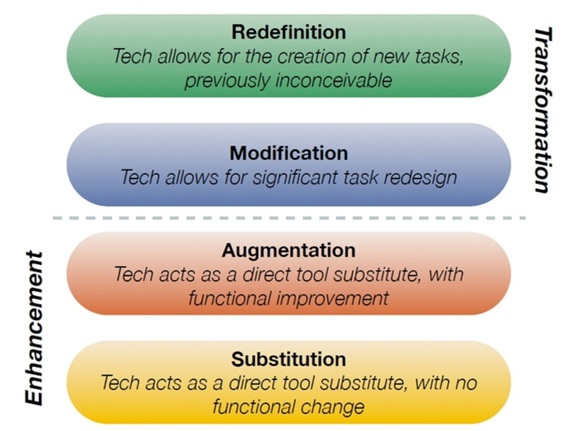"Good teaching is good teaching, no matter
how it's done."
(WorldWideLearn.com)
‘Digital learning is
any type of learning that is facilitated by technology or by instructional
practice that makes effective use of technology’ State Government Victoria Department of Education
& Training (2014). Digital learning includes virtual learning, game based
learning, collaborations and reporting online. E-learning is
the use of digital technologies in a traditional classroom setting which
creates a learning environment with endless possibilities. There are many ways
that e-learning can improve learning gains in an educational environment.
By using e-learning in and out of classrooms
students have the ability to search topics further and in more detail.
E-learning and digital learning allows information to be readily available to
anyone with internet connection and enables the use of digital tools to help
the student study at their own pace. For example, if a student misses out on a lecture
they can watch it at a later time online. They can study what they want, when
they want, where they want – information is ready at the touch of a button, in
the palm of their hand.
Another encouraging feature relating to e-learning
is that students with learning disabilities or with English as a second
language have access to these digital technologies which have advanced so that
those students can still learn with their peers. For example, if a student has English
as their second language, there are apps or language translators readily
available for mobile devices, tablets and also computers that they can use so
that they don’t fall behind.
E-learning lets students learn in the ways that they
learn the best. For students that are auditory learners, they can look up
informative videos and mp3’s. Visual learners can look for interactive websites
and games, images, slideshows and videos. With no time limits on e-learning,
information is accessible 24/7 which makes learning and studying easier for
students to partake in their own time and this will motivate them to learn by
themselves which makes them more efficient learners. As for where they want to
learn they can learn anywhere that they feel comfortable and anywhere that is a
suitable learning environment for instance at school, at home, the library, a
friend or relatives home or on the go.
Aside from all of the positives that come with
e-learning and the use of digital tools in classes, there are also negatives
that are attached to the use of these technologies. For one, online safety is a
major concern for teachers, schools, parents and students. There are so many
cases of online bulling – with some cases not being reported - that websites
used for classes must be monitored carefully and continuously for inappropriate
language, links and comments. Teachers will have to make sure that the websites
they want to use are approved by the school so that they have the best
protection and lock certain websites that they know students will visit from
being accessed.
Cyber (smart :) is a website made by the Australian
Government that contains information on how to be safe online and the
consequences of unsafe behaviour. This information is available to students,
teachers and parents to ensure that whoever uses the internet is safe online
and offline. Teachers, parents and students all need to be aware of the dangers
of being online and this website is the place to get that information. Cyber
(smart :) has information for young kids, kids, teens, parents and schools.
There are fun games and videos for the young kids quizzes to test how cyber
smart kids and teens are about cyber safety.
|
Substitution
|
Augmentation
|
Modification
|
Redefinition
|
|
Students
can use digital tools to easily edit their writing.
Instead
of handwritten work, students can now print their work.
Internet
is a source of information for students to utilize for their writing topics.
|
Students
can use
Students
can insert images to their documents to make them more interesting.
|
With
teacher direction students can use collaborative spaces for writing tasks.
Students
can also use online collaborate sessions to share information and ideas with
peers.
Work
can be done away from school.
|
Collaborate
sessions can be shared with other school classes globally.
Information
is shared in virtual classrooms. Each student can contribute ideas to be utilized.
|
The SAMR model is on digital technologies that talks
about evolving from handwritten text to using digital technologies to improve
spelling, grammar and how they can by using digital technologies, insert
pictures and videos into their documents. Using digital technologies in
classrooms helps the students to develop their writing, reading and listening
skills as these three areas all have technologies designed to develop them.
While this is a good process I’m afraid that the future generations will only
know how to use technology and will not know what a pen is or how to write a
handwritten letter.
References
Australian
Government (2015). Cyber
(smart :). [ONLINE] Available at: http://www.cybersmart.gov.au/. [Last
Accessed 22 April 2015].
State Government
Victoria Department of Education & Training (2014). Teaching with Digital Technologies.
[ONLINE] Available at:
http://www.education.vic.gov.au/school/teachers/support/pages/elearningcurriculum.aspx.
[Last Accessed 22 April 2015].
WorldWideLearn
(1999-2015). Benefits of
E-Learning. [ONLINE] Available at:
http://www.worldwidelearn.com/elearning-essentials/elearning-benefits.htm.
[Last Accessed 22 April 2015].




